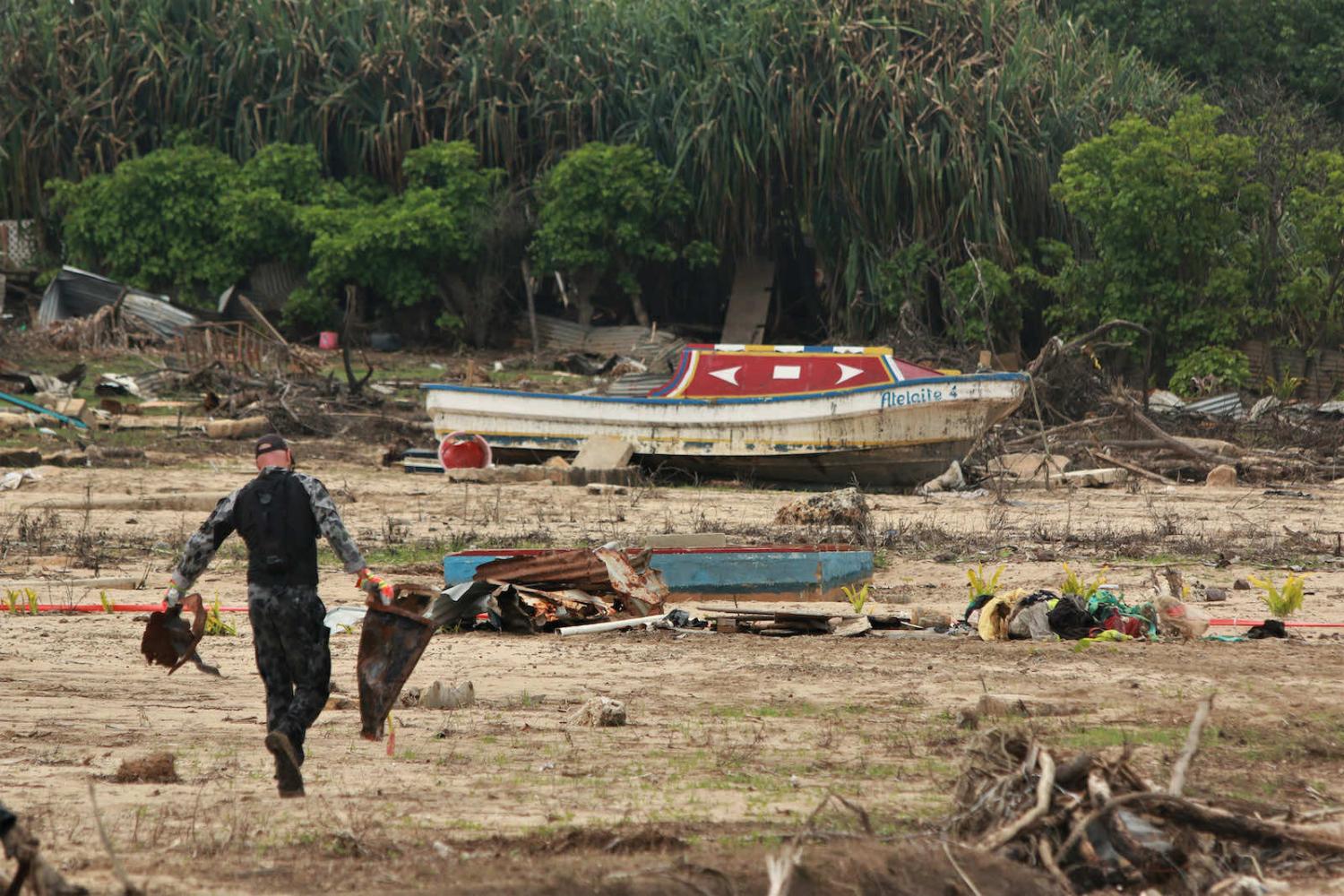The humanitarian community has been challenged by major shocks in the past two years – the Covid-19 pandemic, a military coup in Myanmar, an invasion of Ukraine only the most prominent. These events, together with climate change as a threat multiplier, are changing the operating environment for humanitarian assistance and disaster relief operations of military forces.
Logistics have proved a major issue. The pandemic hit emergency response particularly hard in terms of deployment of personnel and movement of relief items, from the mass transport of personal protective equipment to careful management of vaccine distribution. In Myanmar, humanitarian workers had to cope with restrictions caused by both Covid-19 and in the aftermath of the February 2021 military coup. And fighting in Ukraine in recent weeks following Russia’s invasion is a powerful reminder that a humanitarian crisis could break out in unexpected places.
Training should be designed to increase awareness about the evolving risks in disaster relief and prepare military personnel for harsher and more complex operating environments.
In the long run, the climate crisis threatens the safety and accessibility of infrastructure and facilities for emergency response, with effects projected to become more intense. In Southeast Asia, for instance, the latest IPCC report predicts that the region will have significant increases in extreme weather events, such as heatwaves and strong monsoons. Moreover, countries and communities which used not to be disaster-prone are now increasingly vulnerable. Several states of Malaysia were hit by deadly floods in December, including some in the central and west coast of the peninsula which are not typically affected.
Existing logistical planning will need to be adjusted. Shifting patterns of disasters will also change the availability and accessibility of infrastructure and equipment for operations. The Suvarnabhumi Airport in Bangkok, for instance, is the world’s most vulnerable to sea level rise. Indonesia is planning to relocate its capital as Jakarta is threatened by climate risks.
The response to the tsunami following the volcanic eruption in Tonga in January was a further example of the difficultly involved with deploying personnel in the field during a pandemic. The Tongan government was reluctant to accept deployment of foreign humanitarian workers due to the concern about Covid-19.

Political and security tensions adds to volatility when the military seeks to fulfill humanitarian responsibilities. Not wanting to be be seen to take sides was a concern for Australia and Pacific neighbours when responding to a request last November for assistance following riots in Solomon Islands. Likewise, after the coup in Myanmar, many governments have avoided official engagement with Myanmar so as not to render legitimacy to the military government. As a result, alternative channels for humanitarian assistance have been explored outside the official channel. During the Covid-19 Delta wave in mid-2021, Singapore sent oxygen concentrators to Myanmar through the Singapore Red Cross. In contrast, Singapore’s assistance to Indonesia in the same period was delivered by the Changi Regional Humanitarian Assistance and Disaster Relief Coordination Centre.
The sanctions on Russia following the invasion of Ukraine have further strained global shipping industry and supply chains, which have struggled during the pandemic. Even in the face of a growing humanitarian crisis in Ukraine, no one would seriously countenance the deployment of foreign military forces to provide relief aid at this stage.
The experience in response to these recent challenges shows a need to adapt humanitarian assistance and disaster relief operation logistics. Remote support such as contactless humanitarian aid has been adopted to prevent the spread of Covid-19. But more adaptation will be required. The resilience of warehouses for relief supplies should be enhanced to reduce disruption by climate-extremes in the future, particularly with heatwaves and floods expected to become more common and intense.
Training should be designed to increase awareness about the evolving risks in disaster relief and prepare military personnel for harsher and more complex operating environments. Private logistic companies can also be partners for military forces with limited overseas facilities. Prior agreements on sharing assets, facilities, human resources and networks between militaries as well as between military and non-military actors can alleviate the constraints in times of disasters.
But some rules from previous experience will endure. As always, information sharing is crucial for effective remote logistical support, as accurate information about the needs as well as the national and international response forms the basis of decisions to ensure help is delivered where most needed.

